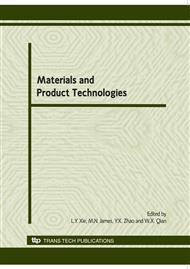[1]
S. Jordan, A comprehensive review of the lognormal failure distribution with application to LED reliability, Microelectronics and Reliability, 1978, 18(3), P. 267 - 279.
DOI: 10.1016/0026-2714(78)90331-1
Google Scholar
[2]
Y. X. Zhao, Q. Gao, J. N. Wang, An approach for determining an appropriate assumed distribution of fatigue life under limited data, Reliability Engineering & System Safety, 2000, 67(1), P. 1 - 7.
DOI: 10.1016/s0951-8320(99)00036-8
Google Scholar
[3]
T. D. Righiniotis, Simplified calculations involving the maximum load on bridge fatigue details under inspection. Part II: Fatigue, Journal of Constructional Steel Research, 2004, 60(6), P. 825 - 839.
DOI: 10.1016/j.jcsr.2003.11.003
Google Scholar
[4]
P. F. Marques, A. Costa, Service life of RC structures: Carbonation induced corrosion. Prescriptive vs. performance-based methodologies, Construction and Building Materials, in press.
DOI: 10.1016/j.conbuildmat.2009.08.039
Google Scholar
[5]
R. Jiang, P. Ji, and X. Xiao, Aging property of unimodal failure rate models, Reliability Engineering and System Safety, 2003, 79(1), P. 113 - 116.
DOI: 10.1016/s0951-8320(02)00175-8
Google Scholar
[6]
A. K. S. Jardine, A. H. C. Tsang, Maintenance, Replacement, and Reliability: Theory and Application, Taylor & Francis: New York, (2005).
Google Scholar
[7]
C. Clarotti, A. Lannoy, S. Odin, H. Procaccia, Detection of equipment aging and determination of the efficiency of a corrective measure, Reliability Engineering and System Safety, 2004, 84, P. 57-64.
DOI: 10.1016/j.ress.2004.01.005
Google Scholar
[8]
R. C. Gupta, N. Kannan, A. Raychaudhuri, Analysis of lognormal survival data, Mathematical Biosciences, 1997, 139(2), P. 103 - 115.
DOI: 10.1016/s0025-5564(96)00133-2
Google Scholar
[9]
D. S. Chang, Optimal burn-in decision for products with a unimodal failure rate function, European Journal of Operational Research, 2000, 126(3), P. 534 - 540.
DOI: 10.1016/s0377-2217(99)00308-2
Google Scholar


